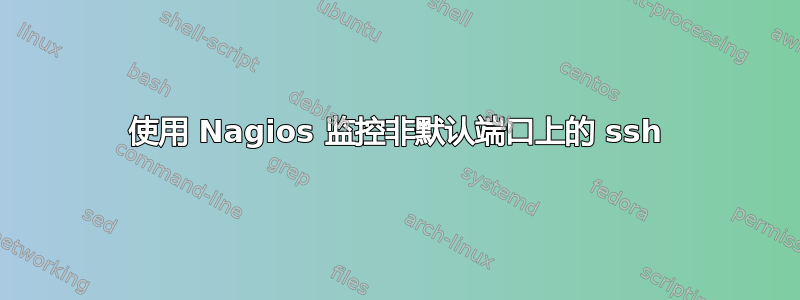
我刚刚在 Gentoo 服务器上部署了 Nagios,除了 ssh 之外一切都很好,它将其标记为“严重”,因为它拒绝连接。但那是因为它在不同于默认 22 的端口上运行。我该如何更改它以使其监视正确的端口?
答案1
host:~$ /usr/lib/nagios/plugins/check_ssh --help
check_ssh v1991 (nagios-plugins 1.4.12)
Copyright (c) 1999 Remi Paulmier <[email protected]>
Copyright (c) 2000-2007 Nagios Plugin Development Team
<[email protected]>
Try to connect to an SSH server at specified server and port
Usage:check_ssh [-46] [-t <timeout>] [-r <remote version>] [-p <port>] <host>
这回答了你的问题吗?-p 参数允许您指定端口,在 /etc/nagios/nrpe.cfg 中进行自定义检查并将其放在那里:
command[check_remote_ssh]= /usr/lib/nagios/plugins/check_ssh -p 1234 some.host
答案2
在 ssh 插件配置 /etc/nagios-plugins/config/ssh.cfg 中,有一个名为 check_ssh_port 的别名。如果不存在,您可以像上面那样定义它:
$ cat >> /etc/nagios-plugins/config/ssh.cfg
define command{
command_name check_ssh_port
command_line /usr/lib/nagios/plugins/check_ssh -p '$ARG1$' '$HOSTADDRESS$'
}
在服务文件 /etc/nagios3/conf.d/services_nagios2.cfg 中,定义要监控的 ssh 服务,如下所示:
define service {
hostgroup_name ssh2-servers
service_description SSH2
check_command check_ssh_port!12000!server
use generic-service
notification_interval 240 ; set > 0 if you want to be renotified
}
答案3
由于上述解决方案对我都不起作用,因此我将发布这个小变化。
此定义是默认定义(例如localhost.cfg:),仅添加了 -p 选项及其之间的空格。
我猜测它是给出的两种解决方案的混合版本。
它适用于 Nagios Core 4 和 nagios-plugins 2.1.1
define service{
use local-service ; Name of service template to use
host_name localhost
service_description SSH
check_command check_ssh!-p 12345
notifications_enabled 1
}
答案4
define service{
use generic-service
host_name localhost
service_description SSH
check_command check_ssh!-p 9898
}
运行正常你可以试试。


